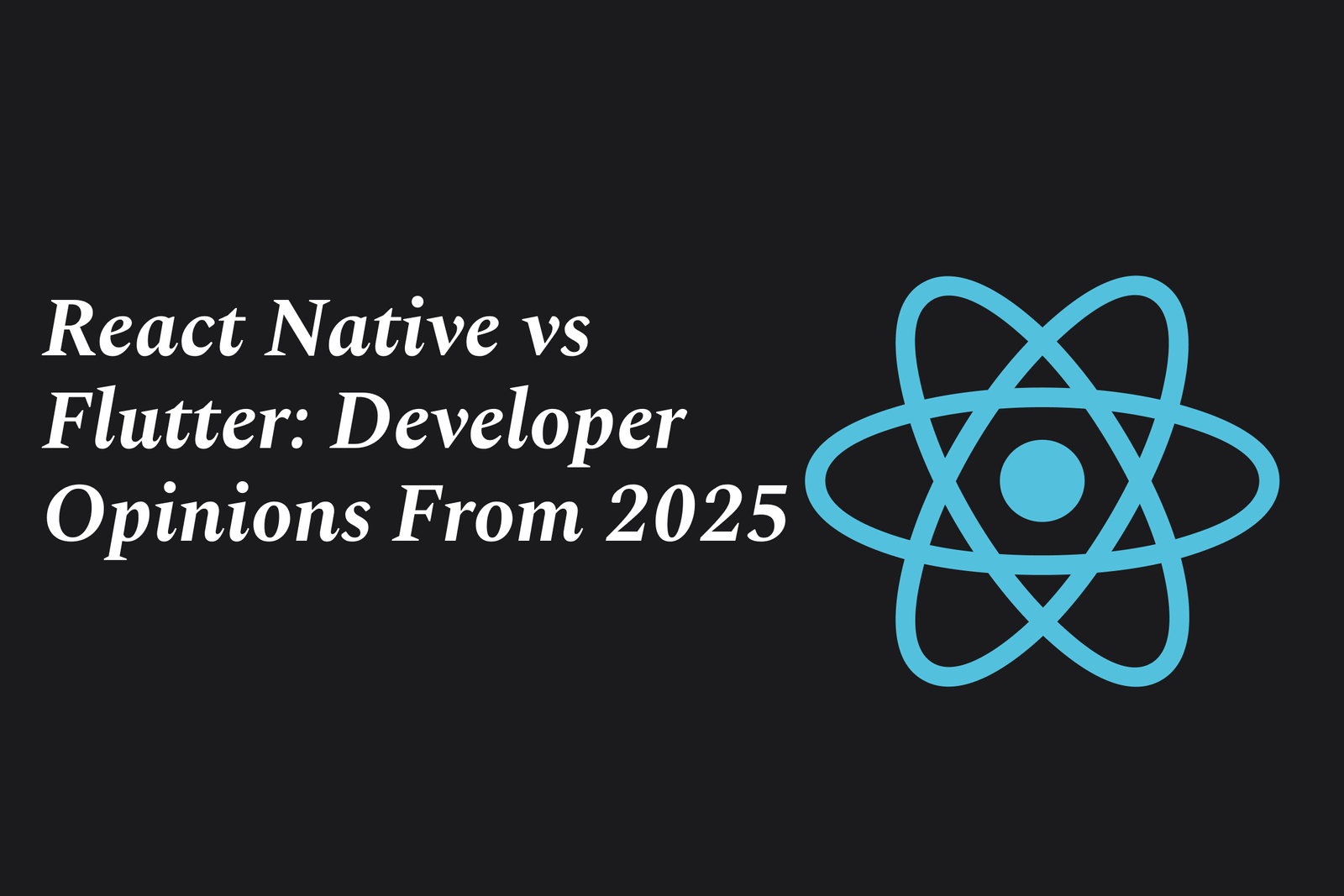Why React Native is the Best Choice for MVPs in 2025
React Native is the top choice for MVPs in 2025 because it enables fast, cost-effective cross-platform app development using a single JavaScript codebase, backed by a strong community and native-like performance—perfect for startups needing quick market entry and efficient iteration.
Why React Native Is The Best Choice for MVPs in 2025
1 ) Introduction to Cross Platform Development in 2025
Native app development, using platform specific languages like Swift or Kotlin, is increasingly seen as costly and duplicative when creating apps for multiple platforms. Cross platform solutions allow developers to write one base code and deploy it on iOS, Android, and sometimes web, significantly reducing time and cost. Two leading frameworks in this realm are React Native (by Meta) and Flutter (by Google).
2 ) React Native and Flutter Overview
React Native uses JavaScript and renders with native UI components via a bridge, allowing code reuse and near native performance.
Flutter uses Dart and its own Skia graphics engine for UI rendering, offering high performance and customizable interfaces.
Both frameworks have matured over the years, with strong communities and widespread industry adoption.
3 ) Why Cross Platform Over Native?
Cross platform tools like React Native and Flutter dominate because they:
Lower development and maintenance costs
Speed up time to market
Allow a single development team to target multiple platforms
Evidence of this trend is seen in declining native app activity on developer forums versus rising interest in Flutter and React Native.
4 ) React Native’s Appeal for MVPs
React Native is especially advantageous for startups and MVPs due to:
Cost Efficiency: One codebase for iOS and Android cuts development costs nearly 40%.
Faster Development: Accelerates launch timelines, vital for MVPs needing quick market entry.
Large Talent Pool: JavaScript familiarity eases onboarding and integration with web projects.
Strong Ecosystem: Extensive libraries and community support simplify implementing features.
Real World Validation: Successful use by major startups like Instagram, Coinbase, and Discord highlights its scalability and reliability.
5 ) Performance and Maintenance
While Flutter has faster rendering with its engine, React Native offers sufficient performance for most MVPs, leveraging native components. React Native’s architecture enables easier maintenance and evolves with ongoing support from Meta and the community. The 2025 updates (e.g., React 19.1 support) improve stability and developer experience.
6 ) Use Cases Favoring React Native
MVPs aiming for broad cross platform reach with limited budgets
Teams with JavaScript expertise seeking rapid app validation
Projects needing integration with existing JavaScript/React web apps
Startups prioritizing time to market and efficient iteration
7 ) Limitations and Alternatives
For apps requiring highly complex native hardware access or ultra custom solutions, pure native development or Flutter’s native bridges might be preferable. However, React Native’s continuously growing capabilities make it a strong default for most MVPs.
Summary:
In 2025, React Native remains the best choice for MVP development due to its mature ecosystem, cost effectiveness, rapid development cycle, and strong community backing. It enables startups and businesses to build and launch cross platform mobile apps quickly without compromising on user experience, making it the top strategic option for MVPs looking to validate ideas and gain early traction efficiently.
https://justacademy.in/news-detail/flutter-community-meetups-in-2025
https://justacademy.in/news-detail/react-native-and-ai-integration-for-smarter-apps
https://justacademy.in/news-detail/android-widget-builder-tools
https://justacademy.in/news-detail/android-file-management-app-innovations
https://justacademy.in/news-detail/flutter-for-college-placements
Related Posts
Java supports GDPR and data privacy by enabling secure data handling through encryption, controlled access, and precise data management. It allows developers to minimize PII exposure, ensure data confidentiality, and design workflows that comply with data protection regulations effectively.
Java code quality tools have evolved to include advanced static analysis, integrated security checks, and AI-powered code reviews. These updates help developers detect bugs, enforce coding standards, and enhance security, streamlining the development process and improving overall code reliability.
Java remains a cornerstone in big tech companies, evolving with modern features like records, pattern matching, and virtual threads. Its robust ecosystem, enhanced performance, and growing AI integrations keep it vital for both legacy systems and innovative new projects.
Java and CI/CD pipeline optimizations streamline Java application development by automating builds, tests, and deployments. They improve efficiency through parallelization, caching, and secure secrets management, enabling faster feedback loops and more reliable, scalable software delivery.
Java supports modern cryptography standards through its flexible Java Cryptography Architecture (JCA), enabling integration of advanced algorithms like AES, EdDSA, and post-quantum tools. Libraries like Bouncy Castle offer FIPS-certified, hardware-accelerated implementations for secure development.
Java 23 enhances record patterns by enabling concise, direct destructuring of record components within pattern matching, simplifying type checks and data extraction. This improvement boosts code readability and expressiveness by reducing boilerplate in handling immutable data classes.
Java remains a top choice for mobile app backends, powering scalable, secure, and high-performance server-side solutions. Latest trends include cloud-native microservices, reactive programming, and enhanced JVM optimizations, enabling efficient, flexible, and robust mobile backend development.
Java SE 24 and LTS Java SE 21 offer enhanced features and performance, while Apache Spark 4.0.0 introduces Scala 2.13 support and advanced ML and SQL capabilities. Together, they empower developers to build scalable, high-performance data applications with modern tools.
JUnit 5 modernizes Java testing with a modular architecture, improved assertions, and seamless Java 8+ support. Beyond JUnit, tools like Mockito and AssertJ enhance mocking and assertions, creating a powerful, flexible ecosystem for writing clean, efficient Java unit tests.
Java plays a pivotal role in cloud automation tools by providing a robust, platform-independent language used to build scalable automation frameworks like Jenkins and Selenium, enabling efficient CI/CD pipelines, testing, and orchestration across diverse cloud environments.










